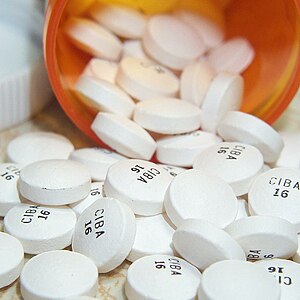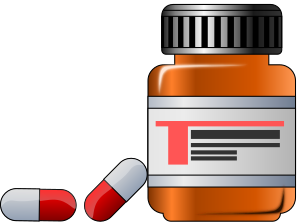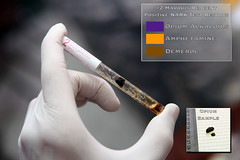Today, ThrillWriting welcomes Sabra Botch-Jones. Sabra is a Forensic Toxicologist and full-time faculty member at Boston University School of Medicine’s Biomedical Forensic Sciences graduate program. She teaches courses in Drug Chemistry, Forensic Toxicology and Instrumental Analysis in Forensic Laboratories.
Fiona -
 |
| Sabra Botch-Jones, M.S., M.A., D-ABFT-FT Department of Anatomy & Neurobiology Boston University School of Medicine Biomedical Forensic Sciences |
Sabra -
I realized that the field of Forensic Science was “where” I wanted to be in during my junior year of my undergraduate degree when I took an Introduction to Forensic Science course. I “thought” I wanted to be a psychiatrist. I did not know that the sub-discipline of Forensic Toxicology was my calling until I was working as an intern at the Federal Aviation Administration during my final year of undergrad.
Fiona -
Here is a PRIMER on Forensic Toxicology.
Can you tell us what a forensic toxicologist does?
Sabra -
A forensic toxicologist is like a chemist. We conduct instrumental analysis on biological samples (like blood and urine, but also body tissues or even bone at times) to determine the presence of drugs, including alcohol, and sometimes other compounds (like heavy metals, etc.)
We are also trained in the interpretation of those results and what they may mean based on the case we are working with. For example, a toxicological result in a living person such as a Driving While Impaired (DWI) case may be different if we find the same value in a deceased person.
Forensic Toxicologists can work in Federal, State, County or private laboratories. The cases can involve living and deceased individuals.
Fiona -
You're sitting on the couch in your den, enjoying a bowl of popcorn with some of your colleagues and watching TV - a crime show. What are the things that make you throw food at the screen and yell at the writers for getting it ALL wrong? What points do you want writers to pay the closest attention to so that you can enjoy the plotline?
Sabra -
So, I don’t have a lot of time to watch TV. As the mom of a 2 year-old, I watch a lot of Curious George (which I love); therefore, I don’t get to watch a lot of crime shows. But if I do, the over simplification of some things and the time it takes drives me crazy.
I don’t let it get to me too much because I know the producers and writers are working with time constraints to tell a story. Plus, as Forensic Toxicologists we are always trying to reduce the time it takes to perform analysis so at times it makes me wistful for faster analytical times.
There is one other humorous thing forensic toxicologist like to joke about and that is wearing white clothes in the laboratory. Besides our lab coats, we don’t typically do that, but now I do it on purpose because every time I do I think of a shows like CSI.
Some points that would really impress me would be using the difficult names of our instrumentation like Liquid Chromatography Tandem Mass Spectrometry or Supercritical Fluid Chromatography.
Fiona -
Do you ever go to a crime scene? Do you ever interview a witness or a family member? Do you ever seek (outside of the laboratory) evidence to support a theory that you came up with while doing your forensic analysis?
Sabra -
Those are good questions, because the typical answer to that question would be no. Most Forensic Toxicologists stay in the lab and are very happy to do so. But, I have been very fortunate in that during my career I worked in a medical examiner’s office with a Forensic Anthropologist who needed help in recovering skeletal remains. Therefore, I have been to scenes -- some were and some were not crime scenes. In one instance, we actually found drug paraphernalia. I do not interview witnesses or family members, however I have spoken with individuals who believed they were being poisoned or victim’s family members to address their questions and concerns.
Also, depending on the laboratory, we may conduct experiments to determine why something happened. One of those areas as a Forensic Toxicologist would be to recreate storage conditions to determine analyte stability.
Fiona -
With whom do you interface? How do the samples get to you?
Sabra -
We interface with medical examiners, attorneys, police officers, judges, jurors, and at times family members. Depending on the laboratory, samples may be hand delivered or may be sent to us.
Fiona -
From whom do you get information for what you are looking for in the sample? Do the detectives ever sit down and chat with you about the case and their theories/what they are trying to prove?
Sabra -
Case information comes in a variety of different ways. If medical information is available for a case, we would review it. We may also look at the investigators' narratives and police reports. Some police officers go through extensive training to become Drug Recognition Experts, and their reports can be very useful. Police officers or investigators do not usually discuss their cases with us, unless they need interpretation on what the results mean. They may want to understand what a drug is and what its effects would be. We don’t typically get involved in the “proof” of a case, as our role is that of a scientist or “fact finder”.
Fiona -
Let's talk plot twists. If a sample is collected -- at the scene or a hospital, for example -- and it is properly packaged for clean chain of custody. Is there any way that a character could taint your sample or switch your sample or for that matter change your report to reflect something other than what was found? The presence of drugs for example?
Sabra -
As a plot twist that's a fun one but a nightmare in reality to a Forensic Toxicologist.
The purpose of chain of custody is to preserve and protect the evidence. But for this example, we don’t have to look too far for real life examples of mistakes that have been made. Storage is one, let’s say you have an unstable analyte that must be kept at a certain temperature or it begins to degrade. Leaving a sample locked in the back of police car (intentionally or unintentionally) might have deleterious effects.
Another scenario would be switching out a sample before or at the lab such as having an “insider” or a “break in” at the laboratory. These all make me shudder but are reason why we have so many safeguards and security measure in our laboratories.
Fiona -
Have you been to court as an expert witness?
Sabra -
I have been to court as an expert witness and I have interacted with both the defense as well as prosecutors. As a Forensic Toxicologist in government laboratory I primarily dealt with the prosecutors or District Attorney’s office. As a consultant, I have dealt mainly with the defense. The hearing was fairly straight forward.
Fiona -
What was it like to sit in the witness box? Did the defense lawyers try to rattle your cage?
Sabra -
I have had attorneys try to rattle me before I took the stand so that I may not present myself in the best possible way. The witness box is a very important place to be and I believe an individual who has the opportunity to sit there should show it the respect it deserves.
Fiona -
Can you give examples of defense rattling techniques? That's good plot fodder.
Sabra -
I had the opportunity to do an interview for The Setup (you can find my interview here: http://sabra.botch-jones.usesthis.com/) and the image I provided was one of a flask and cocktail glass held up to my face. This image represented what we do as Forensic Toxicologists, looking for chemicals that enter the human body. I had an attorney show me the image before testifying and during the cross-examination. I believe he wanted to rattle me, but when he asked me about the interview I had the opportunity to talk about what we do as Forensic Toxicologists and the technology we use.
Fiona -
I always ask my guests to share their favorite scar story or lacking scars their favorite harrowing event story. Would you share?
Sabra -
I have been very lucky to not have many scars, but the ones I have I wear with pride. The longest was from an emergency C section for my son (I also have a couple on my face from him when I let his nails get too long). I am really fortunate to not only get to be a mom but also a scientist. It’s a tough balance, but being a mom, I think has complimented my new role as an educator of future Forensic Toxicologist and Forensic Scientists.
Fiona -
Where could an author look for new material - what's being explored in forensic toxicology?
Sabra -
One of my research focuses include New Psychoactive Substances, and I think this is a great area to explore for writers. Not just the use, but how they are made and obtained.
Fiona -
Sabra, thank you so much for helping us writers out. I truly appreciate your time and expertise.
You can stay in touch with Sabra on Twitter
fTox Consulting, LLC. website
BU faculty website









